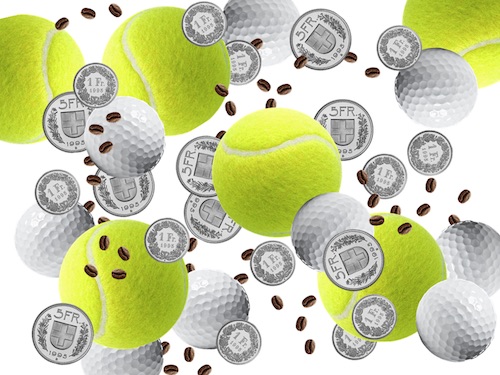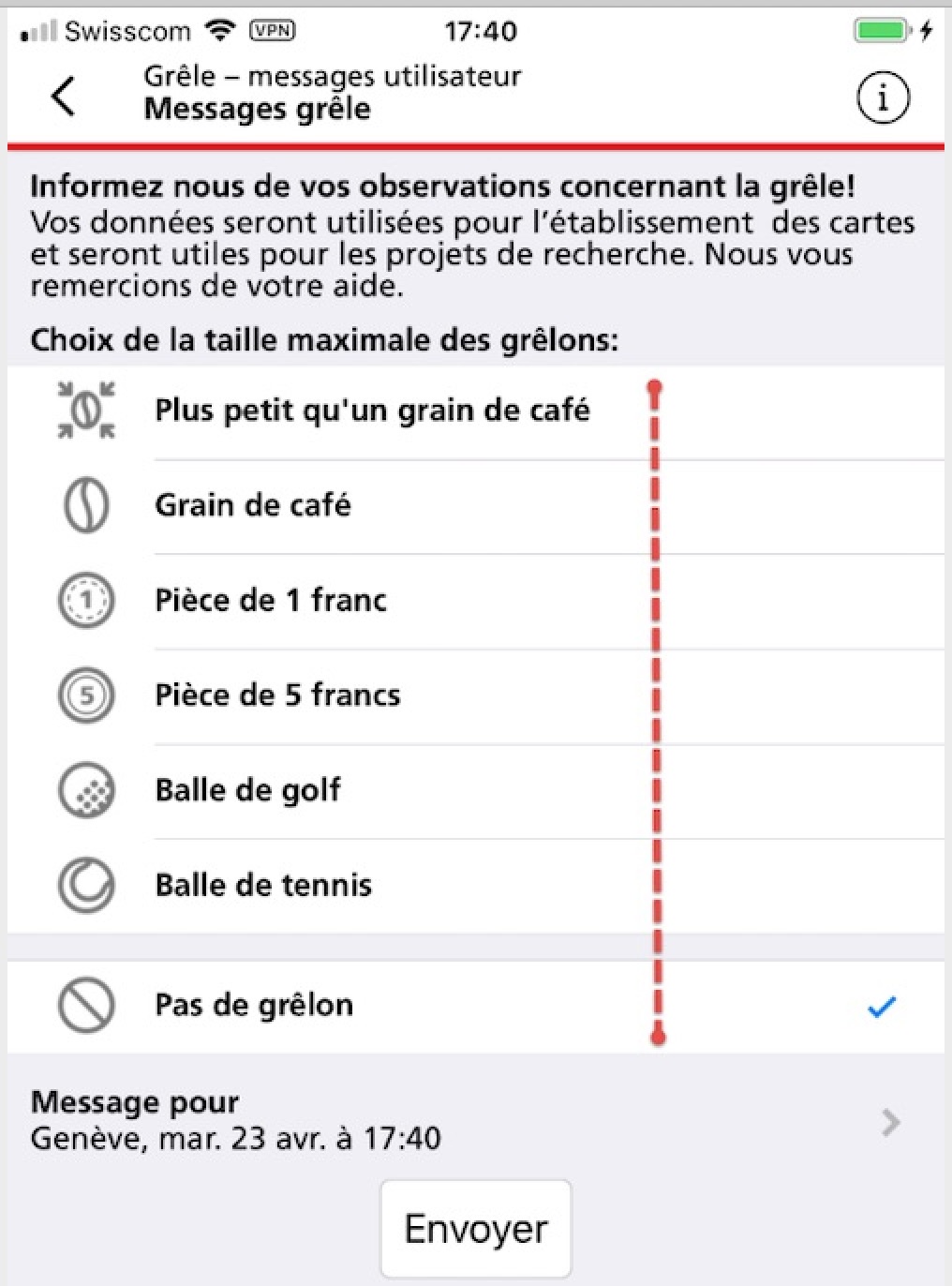
Photo: www.unsplash.com
As spring is in full swing, thunderstorms and rapidly changing weather patterns are to be expected. One of the trademarks of spring weather includes hail; and hail is not easy to measure. However, diameter and measuring are essential for verifying and improving forecasts. Now you can help MétéoSuisse measure hail through an App.

The labels "coffee beans" and the "tennis balls" are two of the six size categories that users of the Météosuisse App can report as observed hail sizes. Thanks to the collaboration with the Laboratoire Mobilière de recherche sur les risques naturels of the University of Bern, a hail report option was introduced in the App in May 2015 and facilitates one of the greatest challenges of modern research: observing and measuring hail.
MétéoSuisse comments, "Over the past four years, some 40,000 anonymous users have sent about 60,000 hail reports. This spatial and temporal density of hail ratios is unique in the world. We would like to thank all those who so far have sent us one or more hail reports!"
But what is done with all these hail reports?
As an example, here is the comparison of hail ratios with the POH (radar algorithm predicting the probability of hail) for May 30, 2018 in northeastern Switzerland. On that day, large hailstones were reported, particularly in the Baden region. The algorithm estimates in which regions the conditions necessary for hail are met and gives a probability of hail.

Figure 1 northeast of Switzerland on May 30, 2018: maximum daily probability of hail — light green: ≥ 50% possible hail, dark green: 100% very probable.
Hail ratios — light blue: sleet and small hailstones (up to and including class "coffee beans"), dark blue: hail of larger diameters (from the category "Fr. 1" = 2.3cm in diameter). Some lakes, some cities and the national border are also presented for orientation. Source: MétéoSuisse and Mobilière Laboratory
 How do I use the the MétéoSuisse App for hail?
How do I use the the MétéoSuisse App for hail?
By following the points below, you can easily report during a hail event:
> Press "animations" on the home page of the MétéoSuisse application.
> Activate the button at the bottom right with the three small triangles and select "hail messages" at the top right.
> Estimate the size class of the larger hailstones present in the vicinity; if there is no hail, please indicate "pas de grêlon".
— smaller than a coffee bean
— coffee bean
— 1 franc coin
— 5 franc coin
— golf ball
— tennis ball
— no hail
> Under the possible size categories is the position set by GPS and time, please check (if this information is not visible; the GPS positioning of the Smartphone must be activated)
> Check all the data again and press "envoyer".
From now on, users of the MétéoSuisse App can inform and transmit the size of the hailstones
It is also possible to report hail after its observation. The location, date and time can be changed manually using the arrow to the right of the location information.
However, from experience, a synchronized report with the hail storm is more accurate than a subsequent report.
Why report "pas de grêle" (no hail)?
A "no hail" message on a thunderstorm day or directly after a hail storm is as interesting to Office fédéral de météorologie et de climatologie as a report from another category. Thanks to this information, it is possible to analyse more accurately the evolution of thunderstorms and to better understand the important processes of formation, evolution and degradation of thunderstorms. This category is also suitable for measuring days without thunderstorms.
Previous articles in French about hail can be found at these MétéoSuisse links:
Série de blogs sur la grêle, printemps 2019
Original article translated by knowitall.ch and republished with permission 03.05.2019 from: Office fédéral de météorologie et de climatologie
www.meteoswiss.ch










